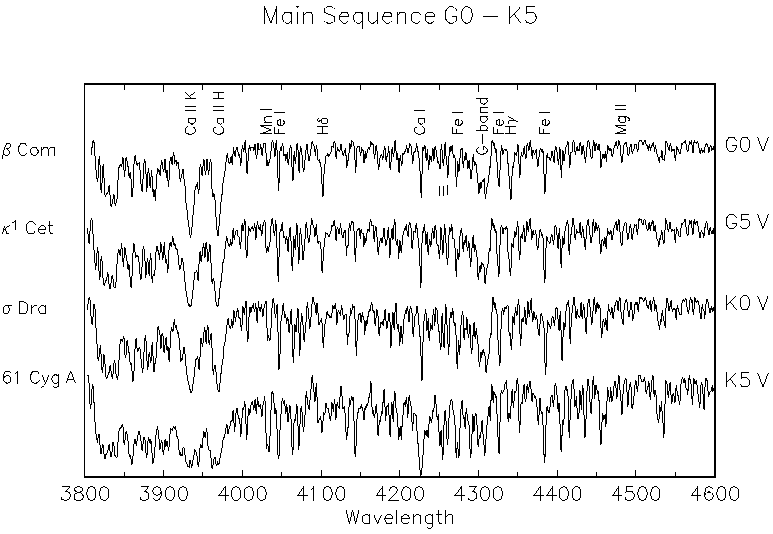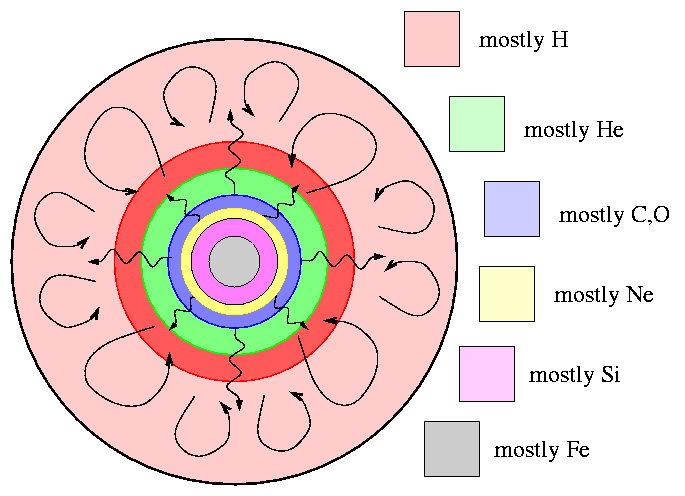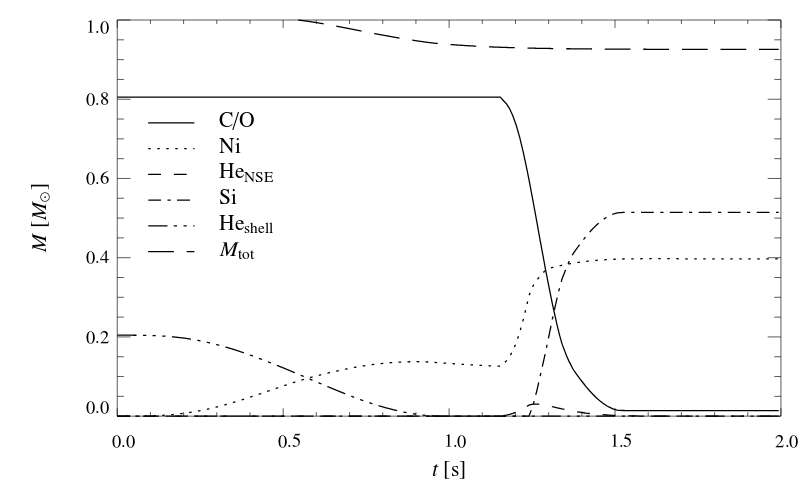
Figure 20 taken from "A Digital Spectral Classification Atlas" by R. O. Gray.
 Copyright © Michael Richmond.
This work is licensed under a Creative Commons License.
Copyright © Michael Richmond.
This work is licensed under a Creative Commons License.
Today is the second of a two-part series of exercises in which you will analyze some X-ray data taken by the Chandra satellite. You can find the list of observations from which our targets will be taken at
We'll follow many of the steps and instructions given in X-ray Spectroscopy of Supernova Remnants - ds9 Version, which is a resource listed on Chandra X-ray Center's "Investigating Supernova Remnants" page.
Finish your analysis of the Tycho SNR
In other words, complete all the tasks listed on the previous day's webpage.
Get to know the G292.0+1.8 supernova remnant
Our second science target is the supernova remnant known as G292.0+1.8. Let's begin with a bit of an introduction: hello, you lovely X-ray dataset!
Part 6:
What sort of material makes up this supernova remnant? One way to find out is to look at its strong X-ray emission lines. You should already know how to do this, so ...
Part 7:
Now, there is an important caveat to using these emission lines as markers of chemical composition. It's true that seeing a strong emission line associated with some element DOES mean that atoms of that element must be present in the gas; and, for strong emission lines, it probably means that there are lots of such atoms.
However, the absence of strong emission lines does NOT necessarily mean that an element is "missing" from the object. In order to produce emission lines due to a certain element, several criteria must be met:
So, it is possible for the spectrum of an object to be dominated by lines of element X, even if X is not the most common element in the object. For example, look at this figure from "A Digital Spectral Classification Atlas" by R. O. Gray, showing spectra of main sequence stars in classes G0 through K5.

Figure 20 taken from
"A Digital Spectral Classification Atlas" by R. O. Gray.
Comparing the remnants: Tycho vs. G292
Today, you've found some evidence for the chemical compostion of SNR G292.0+1.8. Last time, you investigated Tycho's SNR. It's time to compare them:
Part 8:
Supernovae come in many varieties, but there is one big division based on the progenitor of the explosion.

When they run out of fuel in the core, the core collapses; the innermost core shrinks into a proto-neutron star, while the outer core falls onto this proto-neutron star and smashes into it. The collision triggers a complex set of nuclear reactions, which create a burst of neutrinos and sends a shock wave flying outward toward the surface. This shock wave heats and accelerates the intermediate and outer layers of the star, creating a hot, bright, expanding ball of gas.
These are sometimes called supernovae of types Ib, Ic, II, IIb, IIP, IIL, and a few other names. Their ejecta contain a mix of light and heavy elements; an example from one model of a very massive star is shown below.

Taken from Figure 8 of
Ohkubo et al., ApJ 645, 1352 (2006)
These are sometimes called "type Ia" supernovae.
These nuclear reactions produce a somewhat different mix of elements in the ejecta of the explosion. Note that most of the nickel ("Ni") produced in these reactions is a radioactive isotope, Ni56, which decays in a matter of weeks to iron (Fe). (In the graph below, ignore the long-dashed line near the top of the diagram)

Figure 8 of
Fink, Hillebrandt and Ropke, A&A 476, 1133 (2007)
So, can you use your measurements of X-ray emission lines to assign a type to each of the two supernova remnants?
Part 9:
Now, check to see if you are correct. Find (at least) one published paper which describes each event and assigns a type to it. Did the authors agree with you?
The SN remnant G292.0+1.8 was observed a second time with Chandra some years later. You can read more about it at
Extra:
 Copyright © Michael Richmond.
This work is licensed under a Creative Commons License.
Copyright © Michael Richmond.
This work is licensed under a Creative Commons License.